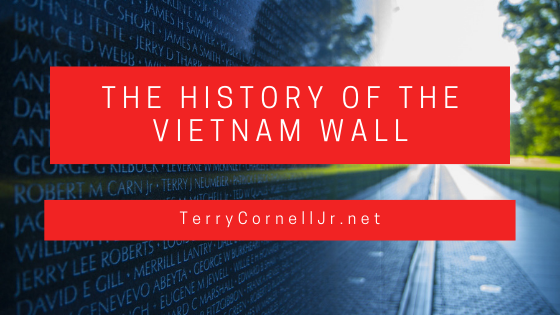In January 1970, young serviceman Jan Scruggs heard a loud explosion while having a morning cup of coffee in the jungles of Vietnam. A number of his comrades had been unloading an ammunition truck and lost their lives in the explosion. This experience caused Scruggs to reflect after his return from the war.
After studying the impact the war had on vets in graduate school, Scruggs decided that a memorial to the men lost in Vietnam would help the nation heal from the war. Vietnam had been a controversial war, and most veterans did not receive a friendly welcome when they returned. Scruggs believed that a memorial would properly honor those who fought in the war while also helping the nation come to terms with the conflict, which was still an open wound through much of the 1970s.
Getting Support
After setting up a foundation known as the Vietnam Veterans Memorial Fund, Scruggs and his supporters began searching for supporters. The VVMF decided to attempt to secure land on the National Mall on which to place the memorial, and it had to go to members of Congress to gain support. Maryland Senator Charles Mathias and Virginia’s John Warner were among the first to throw their support behind the project. Funds came from many private sources, perhaps most notably from future presidential candidate H. Ross Perot.
The Contest
Before erecting the memorial, the government held a contest to come up with a proper design. There were more than 1,400 submissions. When the eight judges made their decision, 21-year-old Maya Lin won the contest. Her design was quite simple. A V-shaped black wall would have the names of the war dead etched on it. The two ends of the V would point toward the Washington Monument and the Lincoln Memorial.
The Controversy
Nearly immediately, there was an outcry against Lin’s design. Perot withdrew his support. The fact that the memorial would sit below ground level and that it would be black were controversial. To garner more support, a statue of three servicemen was added to the design against Lin’s opposition. The wall today has the names of the 58,318 servicemen (including eight women) who were confirmed or believed to be have died during the war. From the center of the V, the names appear in chronological order based upon the day the service members died. Those who died on the same day are named in alphabetical order. The wall has a total length of 493 feet, and at its tallest point reaches a height of 10 feet.
The Vietnam Veteran’s Memorial opened in 1982. Since that time, it has become one of the most visited sites in the nation’s capital. The controversy over the Wall quickly faded, and today, it is a source of healing for many who served in the war.
